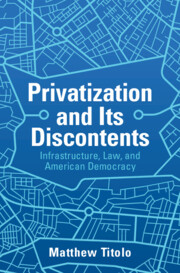90 results
Chapter 4 - 1884: A Literary Field in Formation
- from Part I - Literary Dates
-
-
- Book:
- A History of Argentine Literature
- Published online:
- 09 May 2024
- Print publication:
- 16 May 2024, pp 52-66
-
- Chapter
- Export citation
Chapter 8 - 1963: Experimentation and the Common Reader
- from Part I - Literary Dates
-
-
- Book:
- A History of Argentine Literature
- Published online:
- 09 May 2024
- Print publication:
- 16 May 2024, pp 112-132
-
- Chapter
- Export citation
5 - Varieties of Gacaca; or: The Invention of Tradition
- from Part IV - The Evolution of Lawfare
-
- Book:
- The Violence of Law
- Published online:
- 30 April 2024
- Print publication:
- 02 May 2024, pp 195-246
-
- Chapter
- Export citation
1 - Oceania and the Study of Regions
-
- Book:
- Regional Politics in Oceania
- Published online:
- 15 February 2024
- Print publication:
- 22 February 2024, pp 1-32
-
- Chapter
- Export citation
9 - The Japanese Empire
- from Part I - Imperial and Postcolonial Settings
-
-
- Book:
- The Cambridge History of Nationhood and Nationalism
- Published online:
- 08 November 2023
- Print publication:
- 09 November 2023, pp 179-209
-
- Chapter
- Export citation
Chapter 11 - “Through a Narrow Glass”: Compassion, Power, and Lyndon Johnson’s Struggle to Make Sense of the Third World
-
-
- Book:
- LBJ's America
- Published online:
- 19 October 2023
- Print publication:
- 19 October 2023, pp 281-302
-
- Chapter
- Export citation
3 - Sharp Connectivity
-
- Book:
- Recentering Pacific Asia
- Published online:
- 03 August 2023
- Print publication:
- 17 August 2023, pp 77-106
-
- Chapter
- Export citation
6 - Roman Dominium in the Republics of Latin America
-
- Book:
- The Making of Modern Property
- Published online:
- 13 July 2023
- Print publication:
- 27 July 2023, pp 235-279
-
- Chapter
- Export citation
8 - The Marginalization of Islam
- from Part III - Religious Repression
-
- Book:
- Freedoms Delayed
- Published online:
- 20 July 2023
- Print publication:
- 20 July 2023, pp 133-146
-
- Chapter
- Export citation
Introduction
-
- Book:
- Privatization and Its Discontents
- Published online:
- 08 June 2023
- Print publication:
- 22 June 2023, pp 1-32
-
- Chapter
- Export citation
Conclusion
-
- Book:
- Privatization and Its Discontents
- Published online:
- 08 June 2023
- Print publication:
- 22 June 2023, pp 199-210
-
- Chapter
- Export citation

Privatization and Its Discontents
- Infrastructure, Law, and American Democracy
-
- Published online:
- 08 June 2023
- Print publication:
- 22 June 2023
“Iranian Conditions: Health Problems and Medical Practices in the Words of the Staff of the Alliance Israélite Universelle, 1900–1950”
-
- Journal:
- Iranian Studies / Volume 56 / Issue 3 / July 2023
- Published online by Cambridge University Press:
- 05 June 2023, pp. 471-495
- Print publication:
- July 2023
-
- Article
- Export citation
3 - Untold Histories of Research Evaluation
-
- Book:
- The Evaluation Game
- Published online:
- 21 April 2023
- Print publication:
- 27 April 2023, pp 70-97
-
- Chapter
- Export citation
12 - Postscript
- from Part III - Legitimacy and Local Agencies
-
-
- Book:
- Revolutionary Transformations
- Published online:
- 06 April 2023
- Print publication:
- 13 April 2023, pp 275-288
-
- Chapter
- Export citation
1 - Histories
-
- Book:
- The Making of Persianate Modernity
- Published online:
- 23 March 2023
- Print publication:
- 30 March 2023, pp 42-76
-
- Chapter
- Export citation
‘Great Northern Wilderness’-style environmentalism: Nature preservation and the legacies of Mao-era land reclamation in China’s northeast borderland
-
- Journal:
- Modern Asian Studies / Volume 57 / Issue 4 / July 2023
- Published online by Cambridge University Press:
- 23 March 2023, pp. 1198-1218
- Print publication:
- July 2023
-
- Article
- Export citation
1 - Modernization, Inclusion, and Power
-
- Book:
- Democracy or Authoritarianism
- Published online:
- 09 March 2023
- Print publication:
- 16 March 2023, pp 23-60
-
- Chapter
- Export citation
5 - The Petrochemical Paradise
- from Part II
-
- Book:
- Petroleum and Progress in Iran
- Published online:
- 15 December 2022
- Print publication:
- 22 December 2022, pp 151-181
-
- Chapter
- Export citation



